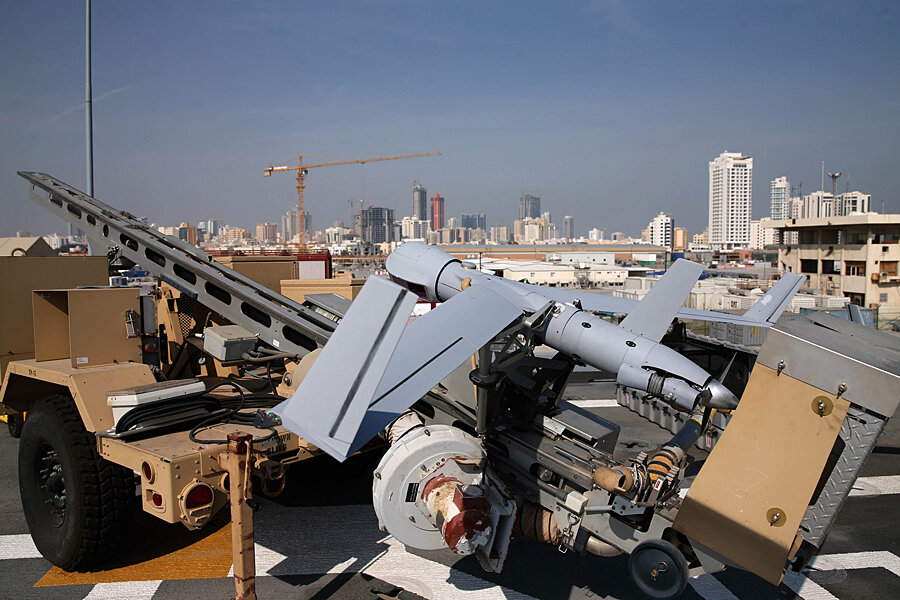Not your average drone: new technology the US military is developing
Loading...
| Washington
High above the skies of Area 51, the secret US military testing ground in the Nevada desert, the Air Force is readying a new generation of spy drones.
Dubbed the RQ-180, this drone is designed to penetrate “deep into heavily defended airspace,” according to Aviation Week, which details the project in a cover story released Friday.
In discussions of drone warfare, defense analysts have long noted that drones have worked well for the US military in wars like Iraq and Afghanistan, where enemy fighters had little to no air-defense capabilities.
Yet they acknowledge, too, that it’s actually not too hard to shoot down America’s current crop of go-to drones, like the Predator and the Reaper, since they don’t have any stealth technology.
Indeed, in the Bosnia war, for example, drones were almost dismissed as a viable military weapon, because it was so easy to shoot them down. In the 1999 NATO bombing of Yugoslavia, 15 of the 17 allied aircraft shot out of the skies by Serbian air defenses were drones.
“In contested airspace – a more plausible scenario for future conflicts – today’s UAS [unmanned aerial systems] would be extremely vulnerable,” said Gen. Roger Brady, at the time the outgoing commander of US Air Forces in Europe, at a UAS conference in 2010.
That is beginning to change. The new RQ-180, funded in the Air Force’s classified budget, would have cutting-edge stealth technology, so it could evade radar systems in a way that the Predator and Reaper drones cannot.
It would also have the ability to be deployed on electronic attack missions (targeting radar and communication systems), according to the Aviation Week article.
This news comes the same week that the US Naval Research Laboratory (NRL) announced it had launched an all-electric, fuel cell-powered UAV (unmanned aerial vehicle) from a submerged submarine.
Launched out of a submarine’s torpedo tube, the UAV can then rise to the ocean surface, where it might resemble a buoy to the casual viewer. It can then be launched into the air on a mission to gather surveillance video for up to six hours.
The technology “meets the needs of the special operations community,” said Warren Schultz, program developer and manager of the NRL, in a statement. This in turn allows for a “relatively low cost” drone that could also be launched from, say, a pickup truck or a “small surface vessel,” according to NRL.
The use of drones will be pivotal in the Pentagon’s battles of the future, which already involve being “in a continuous state of war,” says retired Maj. Gen. James “Spider” Marks, former commander of the Army’s premier intelligence center at Fort Huachuca in Ariz.
This could ultimately mean “omnipresent” surveillance, Mr. Marks said in remarks Thursday at the McCain Institute in Washington. “We might have a capability that is so pervasive that we have ISR [intelligence, surveillance, and reconnaissance] on top of everybody all the time,” he said.
“What we are doing now will not go away,” he added. “We are now defining what our new ‘normal’ looks like.”





